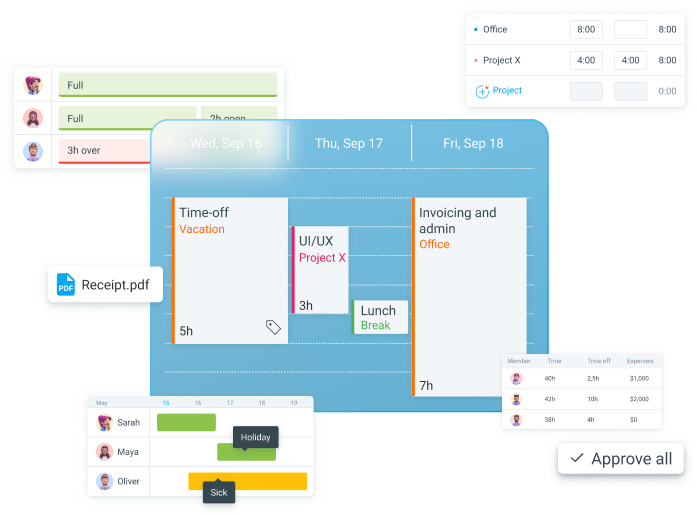It’s old news that remote work is on the rise. But, despite the growing popularity, distance working comes with its fair share of challenges.
We’ve asked 22 professionals who work remotely in different positions to share their biggest hurdles.
Turns out, most remote workers encounter 9 common problems. We’ve listed them all, together with tips on overcoming them.

Challenge #1: Feelings of isolation and loneliness
Remote work doesn’t lend itself to spontaneous chats between colleagues. In most cases, you end up talking only about work without getting to know each other.
As a result, remote workers are often lonely. Sometimes, the solution is switching to a hybrid work model that gets you at least some in-person time with colleagues.
Head of marketing in the education sector, James Rice, did the same after 8 years of working remotely. In fact, James sees social connections to his coworkers as a basis for meaningful friendships, and he doesn’t believe the lack of in-person interactions is natural:

“Although some people relish not having to interact with colleagues daily, it can be lonely when you are a remote worker. Work colleagues can become lifelong friends and form the basis of a lot of social activities.”
A freelance writer and research assistant working remotely since 2016, Diane Lee, claims that despite the obvious advantages, isolation is still the #1 issue of remote work:

“The main challenge I face as a remote worker is isolation. The benefits are that I can more or less work my own hours (pressing deadlines aside) — and from any location. But the fact that I work alone (as a sociable person) is something that I’ve had to overcome. When I worked in an office back in Australia, my colleagues were also my friends.”
Moreover, freelance photographer, content writer, and designer Connor Mollison finds the lack of opportunities to socialize to be the key issue of remote work:

“Although I’m naturally an introvert, lack of social interaction has led to poorer mental health and not as much mental energy.”
Research also suggests that remote workers often feel lonelier than their in-office counterparts due to a lack of social interactions.
How to handle isolation and loneliness when working remotely
While being physically separate from team members can be discomforting, taking active steps to socialize is crucial for a healthy work-from-home setting.
Diane Lee finds this conscious effort to meet up with people beneficial in warding off loneliness:

“I’ve found that I now have to build socializing into my daily routine because if I don’t actively seek to socialize, it doesn’t happen. Luckily, many of my friends are also freelancers, so we often meet for a morning coffee, lunch, or dinner — or even a workout at the gym.”
Switching surroundings can help, too. Melissa Smith, a virtual assistant at a remote company, claims that a simple change of scenery does wonders:

“Making sure you’re not isolating yourself doesn’t just mean you have to do things with others. I find that sitting in a park reading a book while others walk by, smiling at strangers, or having a casual conversation does wonders for how I feel.”
A CEO in the event industry with 10+ years of experience in remote work, Michael Alexis, suggests simple team-building activities as a quick fix for social isolation:

“With remote work, you need to be much more intentional about getting social time with coworkers. For example, if your manager or HR department plans a virtual happy hour or virtual team-building activity, then try to attend it. You can also do little things throughout the workday to help. For example, doing a quick round of icebreaker questions during a Zoom meeting is a great way to get to know people a little better.”
💡 CLOCKIFY PRO TIP
What better way to ward off isolation while working remotely than a time management game or two? Check out some of the best time management games and activities right here:
Challenge #2: Working in different time zones
The remote gap gets even wider when working with teams or clients from different time zones. According to the Harvard Business School, time zone differences can reduce productivity if not effectively managed.
To avoid wasting time, many remote workers constantly have to adjust their work hours and schedules.
In fact, Sumit Bansal, a remote worker since 2013 and the founder of an online platform, states that he frequently needs to adjust his work schedule to his clients’ time:

“Since I work with clients from across the globe, not being in the same time zone as the client is a major challenge. Many simple queries can be answered right away, but since we are in different time zones, it often leads to a waste of time. Sometimes, I am compelled to work in the client’s time zone to make sure things are moving along smoothly.”
Moreover, the executive director and founder of a digital marketing agency, Kirill Sajaev, sees poorly scheduled meetings as particularly troublesome for remote teams working in different time zones:

“While it’s difficult to schedule synchronous activities and meetings in global teams, this does not exempt us from being aware of our employees’ needs. Without a well-defined meeting calendar, the team is at risk of falling behind and having to reschedule brainstorming sessions and catch up.”
💡 CLOCKIFY PRO TIP
Wondering how your time zone affects your productivity? Learn more about the issue here, as well as ways to retain efficiency regardless of where you are:
How to handle remote work across different time zones
Despite being dispersed across different time zones, employees can still achieve efficiency in a remote work setting.
Kirill Sajaev, for example, finds that establishing a common working time zone that suits everybody helps successful collaboration:

“Even something as simple as agreeing on a shared working time zone can go a long way toward making sure everyone is present and aware of the fact that their presence is crucial to the success of many.”
A reliable tool like Clockify simplifies collaborating in remote teams by automatically converting time zones.
Let’s say Priya works for an accounting firm in Mumbai, but her manager, Liam, is based in London. Priya works on a client account from 7 p.m. to 8 p.m. and records this in her Clockify timesheet.
When Liam views her timesheet, Clockify automatically converts the time entry for him from Mumbai time to London time. So, Liam will see that Priya worked on her task from 11:30 p.m. to 0:30 a.m. in his local hours.
Each user can choose their local time zone in their profile settings, along with other time options:
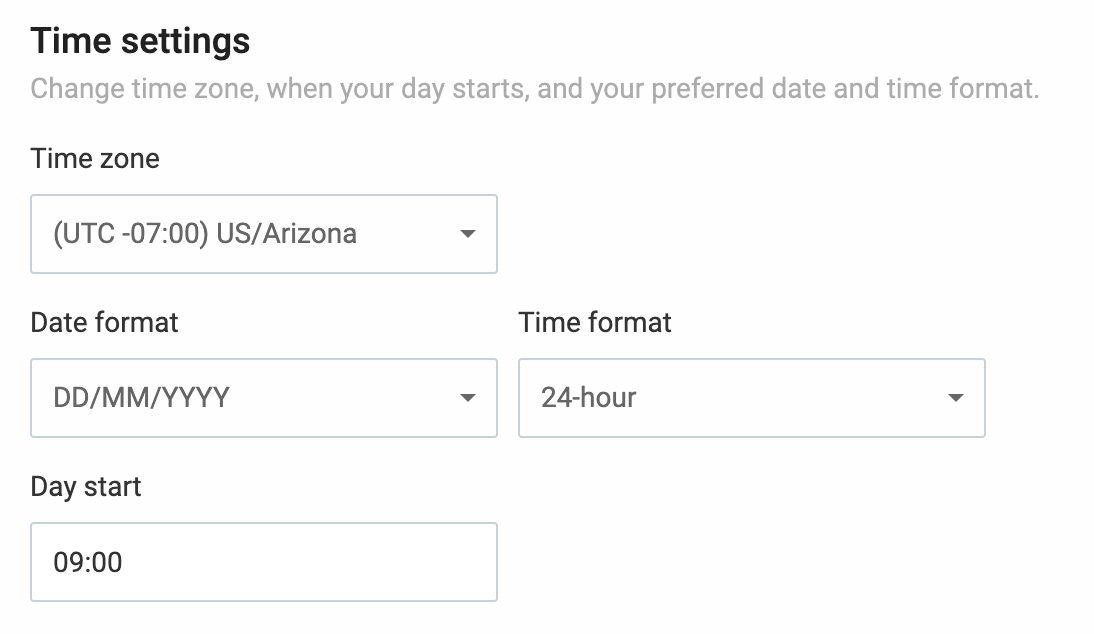
Thanks to Clockify’s automatic time conversion, you and your team won’t waste time on another menial task like calculating time zones.
Challenge #3: Mastering async communication
Despite giving employees autonomy and flexibility, remote work can also create issues with async communication.
In this situation, there’s no real-time communication with instant replies. Each response comes with a (sometimes sizable) time lag. According to Harvard Business School research, this lag can diminish team productivity. This can be particularly challenging for newly onboarded remote workers.
A health expert and the CEO of a remote company, Kyle Risley, confirms how hard async communication can be:

“If employees are used to communicating with team members who are in the same office, or the same time zone, async communication is a major struggle. Async communication can cause some people to feel like they’re sending letters and can’t rely on getting a swift response when they need it.”
The author of several work-at-home books and a remote worker herself, Leslie Truex, claims that async communication can be a consequence of subpar remote management:

“For me, the biggest issue that comes up in remote work is communication. A lack of clarity from my home office often means extra work for me because I either didn’t do what my boss had intended, and I have to redo it, or we have to go back and forth by email until I’m clear on what is wanted.”
💡 CLOCKIFY PRO TIP
Leading a remote team usually requires adjustments to your regular management style. Here are a few tips on proper remote management:
How to overcome the challenges of async communication
When handled properly, async communication can actually fuel creativity and promote collaboration.
To achieve this, Kyle Risley says you need to choose the right communication and collaboration tools first:

“Once you know what tools your business needs to thrive with async communication, you’ll likely find your business is working better than it ever had before. To start, remote teams should prioritize a culture of communication. Be proactive when providing updates on projects, when team members encounter delays, and next steps on a given project.”
To press further, Kyle asserts that having tools that let you quickly see your teammates’ current tasks helps maximize efficiency:

“While proactivity will allow other team members to build strategies for how they can build their day, you can make this more effective by using project management software that requires team members to routinely update their project status.”
Challenge #4: Lack of routines
Once they begin telecommuting, remote workers often struggle to establish proper routines in their new work setting.
When given the option to set their own schedule, many remote employees fail to adjust and end up working nonstop.
A digital nomad who’s been working remotely since 2016, Nathan Gell, found establishing a consistent work-from-anywhere routine tricky:

“Some days I wake up early, ready to own the day and start work at 8 a.m. I power through the day filled with motivation, and before I know it, I’m still working at 8 p.m. Other days, I get up late or have some errands to run in the morning. I start work later at 10 a.m. Then by 3 p.m. I’m mentally checked out and need to take the afternoon off to rest.”
Marketing expert Jon Hayes sees the lack of physical activity, as a consequence of not going to the office, particularly problematic:

“For me, the main concern has been creating an active routine. When you consider that traditional office jobs force you to leave the house to commute to work daily and often encourage you to leave your desk to grab a coffee or get some lunch at regular intervals, when working from home you can soon find yourself feeling trapped within your house or apartment and relying heavily on the convenience of having everything you need right next to you.”
How to establish proper routines while working remotely
There’s no one-size-fits-all remote work routine for everyone. So, trying and testing different approaches until you find the one that’s up to your expectations is the best way to go.
Breaking up your workday into different groups of tasks is one way of handling the initial lack of routine, according to our expert interlocutor Melissa Smith:

“I overcame my challenges by creating routines of habit for a certain time of day. I run and exercise in the morning, as well as answer all my emails, and then I edit my written work. In the afternoon, when I crave interaction, I schedule the majority of my calls and consultations. This is also the time I write since I’m more likely to be more creative.”
When you organize your schedule according to the types of tasks you’re working on, you minimize the chances of getting sidetracked and actually master time management.
Manage your time with Clockify
💡 CLOCKIFY PRO TIP
Need help dividing your time into efficient blocks that make logical sense? Here’s everything you need to know about this time management technique:
Challenge #5: Setting work-life boundaries
Whether it’s doing a simple chore or having a quick conversation with your family during work hours, work can quickly spill over into your personal life and vice versa.
The CEO of a creative agency who has been working remotely since 2016, Charlie Heck, says that a lack of boundaries was her greatest obstacle in remote work:

“My biggest challenges are friends, family members, and new acquaintances who assume I can just pop off from work whenever. While I love my work-life balance and, with a little planning, can indeed set my own schedule, there is a common misconception that if you perform remote work from home, you can do whatever you want. Most of us remote workers either have to track our time or complete client projects before we can bill out for our work.“
Remote content writer and marketing specialist Alex Tran has noticed that working from home often disrupts her usual routines:

“I get distracted by chores that take me 5 minutes to do at home. I end up doing 5 small chores, and there goes 25 minutes of my lunchtime!”
It might seem like remote work brings fewer workplace distractions. In reality, telecommuting simply changes the type of distractions you’re encountering.
A study by researchers at the University of Chicago found that, on average, work time increased by 0.8 hours per day when people switched to remote work. Weekly, this adds up to around 4 hours of additional work, significantly cutting into personal time.
How to set work-life boundaries when working remotely
It’s easy to give up on an hour or two of your free time for the sake of squeezing in just one more task. If this becomes a daily habit, however, it can have a negative impact on your personal life.
Fortunately, this habit is very much reversible.
Remote worker Nathan Gell, for example, finds scheduling non-work activities helps prevent work from eating up his private time:

“I think the challenge of not working all day mostly comes down to discipline. What I like to do is set myself non-work tasks or activities for the end of the day. The main way I do this is by setting my workout time for 5:30 p.m. A workout is the perfect segway between work mode and relax mode because, after it, all you want to do is chill out.”
Devising a simple end-of-the-day ritual could be a quick fix to a never-ending loop of trying to complete an impossible amount of work within a day.
Yet, the CEO of a digital media platform, Brian Nagele, thinks that setting work-life boundaries is more of a team effort:

“Organize virtual work desks where team members can huddle together to complete tasks. This technique adds a bit of stability and organization back to the remote workspace. Although its intention isn’t to provide surveillance, virtual co-working hours can provide team members with the accountability needed to stay on top of tasks. In the long run, it also contributes to maintaining a healthy work-life balance by establishing boundaries within your schedule at home.”
Challenge #6: Traveling while working remotely
Remote work doesn’t always bind you to your home office. In fact, the liberty to work from anywhere is one of the main draws of telecommuting.
Still, the option to set off from your work-from-home setting doesn’t come without its challenges.
Traveling photographer Chris Schalkx says that work can prevent you from making the most of each place you visit:

“While the ‘working while traveling’ thing is a lot of fun, I do feel like I’m missing out on all the sights of a new destination when I’m glued to my laptop screen, which often leaves me questioning myself why I paid to fly to somewhere new. Despite a very relaxed employer and flexible schedule, it’s sometimes difficult to fully enjoy a new destination when there’s a deadline looming in the back of your head.”
A senior editor who has been working remotely since 2016, Hannah L. Miller, finds unstable Wi-Fi connections a huge hurdle for working while traveling:

“Traveling can be tricky and a bit stressful, especially at airports. You never know if you’ll have reliable Wi-Fi or if someone will reach out to you with a crisis you can’t solve ASAP, because you don’t have service or Wi-Fi. I can’t tell you how many times I’ve gotten onto a plane and received panicky texts and felt constant anxiety as I’m up in the air, awaiting the problem I’ll have to sort out when I’m back on the ground.”
How to handle the challenges of traveling while working remotely
At the end of the day, working from anywhere is doable, but only with some careful planning.
Remote career blogger Sireesha Narumanchi thinks adaptability to new circumstances is crucial:

“One golden rule that you need to follow if you want to be a digital nomad is to be super organized. You should be prepared for all the unplanned things that can happen. For example, I always have an extra set of laptop chargers, multipurpose plugs, and power banks ready in my bag. These are the first things I pack when we leave for a vacation.”
Chris Schalkx adds that keeping your team in the loop about your availability is crucial if you plan to go sightseeing:

“Since I don’t work full time, I made clear arrangements with the company. My team knows which days I’m working, and which days I’m ‘off’ (e.g., I work on Monday, Wednesday, and Friday). The ‘off’ days can be used for sightseeing and other fun stuff when I’m traveling.”
Updating your team on your availability relieves the pressure when you take time off. If you use a powerful time tracking app like Clockify for tracking your PTO, you’ll also be able to see your team’s schedule and plan your own vacation time accordingly — see below.
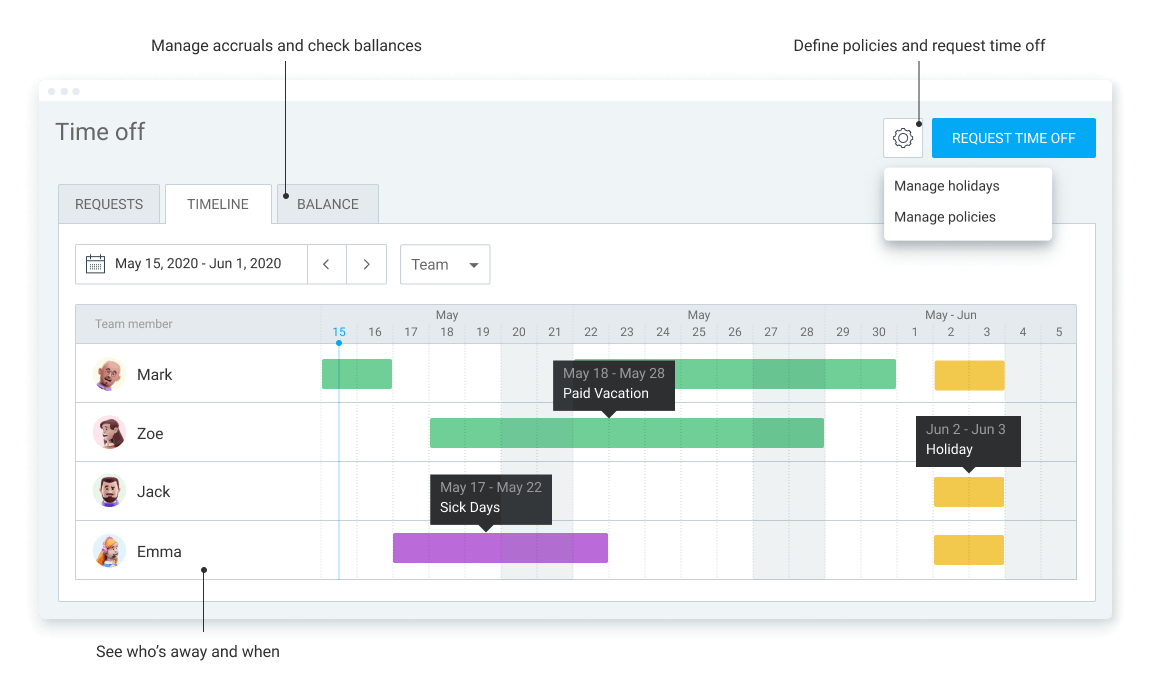
Track team availability in Clockify
💡 CLOCKIFY PRO TIP
Staying on top of everyone’s time off can be difficult, especially if you manage a remote team. Read more about how to do it successfully:
Challenge #7: Integrating into the company culture
Instilling a sense of company culture in new hires can be challenging when everyone’s working remotely. Without in-person communication, employees may feel more disengaged from their work.
Kirill Sajaev finds the lack of engagement with the organization particularly problematic:

“Remote working cultures have trouble developing inclusive employee experiences. On a computer screen, remote employees feel more isolated. Businesses must use communication approaches that encourage inclusiveness and employee equality when considering a transition to more remote working practices because employee engagement is determined by a sense of belonging. Employees working from home must have a similar experience to those working in the office.”
In contrast, our expert interlocutor James Rice sees the integration into a hybrid work environment as a process that can make or break remote employees’ work experience:

“If you are the only remote worker in a large in-house team, it can be tricky to integrate yourself into company culture and be visible to management. This can affect long-term prospects if not managed correctly. It is important to be included in important team meetings and events, and to feel a part of the team.“
How to handle integrating into the company culture remotely
To prevent remote work from eroding employee engagement and sense of belonging, communication and recognition are key.
Kirill Sajaev claims that making each team member feel equally important and worthy leads to an inclusive remote culture:

“People tend to overlook common courtesy when working from home. Instead of making a direct request, sending a warm greeting to your remote staff can do wonders for their spirits. A warm welcome can go a long way toward making remote workers feel more human and less like faceless worker drones. Remember to compliment them for their hard work as well.”
Kirill adds that even a small gesture can go a long way in building a welcoming environment:

“Always remember that small acknowledgements can have a significant impact. Professional relationships are strengthened when these small acts are brought together.”
On a similar note, remote employees can foster a sense of connection by frequently engaging with their coworkers. In fact, research has shown that even a simple effort, such as engaging in small talk, can have a positive impact on the work experience and sense of belonging of remote employees.
Challenge #8: Lack of physical activity
Taking a break from technology becomes extremely difficult once your home becomes your office. You often find yourself drawn back to the screen, which may lead to mental exhaustion.
It’s not just mental fatigue, though — long hours in front of a screen take their toll on your physical well-being, too.
As a huge advocate for physical activity and a freelance content writer, Hannah Kowalczyk-Harper notices how staying healthy and active while working remotely is tough, but necessary:

“Most remote work involves a lot of computer time, and my work is no exception. It’s really important for me to remember to stay physical and in good health. This means taking advantage of workspaces that allow for standing and taking frequent breaks to get my blood circulation flowing.”
Likewise, Earl White — a real estate attorney working remotely since March 2017 — sees the sedentary lifestyle as a cause of health issues:

“I was employed in an office setting before working full-time from home. Although my job didn’t require physical labor, I moved around regularly by commuting to work, attending meetings, or even just walking to a local store. I hadn’t anticipated that one of the biggest challenges of working from home was being totally stationary. My back hurt, and I gained weight. Being productive with aches and pains is difficult.”
How to deal with the lack of physical activity while working remotely
While remote work often means being less physically active, it’s not all doom and gloom. You can always go the extra mile to squeeze more activity into your remote workday.
Earl White, for example, changed his remote work setup and routine to be less sedentary:

“I resolved the issue by purchasing a standing desk and yoga mat, as well as a chair with lumbar support. I also go for a walk before work and after lunch.”
Hannah Kowalczyk-Harper, on the other hand, maximized active time by blending it with her daily tasks:

“If I’m on a client call that doesn’t require taking notes, you can bet I’m walking around during it. When I need a break from my tasks, I try to do less internet idleness and more squats.”
Regardless of your approach, try to take frequent breaks and opt for standing whenever possible, rather than sitting.
Challenge #9: Building trust in a remote workforce
When you and your team don’t work in the same physical space, building trust can be tough.
For Will Ward, co-founder of a full-service translation agency, balancing trust and accountability was particularly difficult in a remote setting:

“There is a thin line between tracking progress and micro-managing. I’ve seen many managers confuse one for the other. I was lucky enough to have been mentored by great managers during the early part of my career. Thanks to their inputs, I was able to steer clear from accidental micro-managing. Once tracking progress becomes micro-management, it just backfires the entire equation. It will end up with your co-workers feeling you don’t trust them.”
Sometimes, leaning too heavily on oversight and accountability can backfire, reducing productivity.
💡 CLOCKIFY PRO TIP
Need help promoting accountability and transparency in your team? Check out this guide for some practical tips:
How to overcome trust issues while working remotely
Digital marketing strategist Ashley Sterling believes that open and honest communication is the optimal approach to handling trust issues:

“If a team feels like there is a ‘big brother’ always watching, always questioning, it’s going to make employees feel like they are being judged at every turn. Instead, keep lines of communication open — ask questions, listen to concerns, and work to make sure the team feels supported, on the same page, and unified. A team’s ability to work together is based on trust and communication.”
Change manager and executive coach Timothy Lynch says that communicating about work isn’t enough to foster trust in a remote team. He believes personal communication is equally important:

“I have found that personally reaching out early or late (depending on how I know the person) works, and just checking in on them helps. Please don’t make it a call about a project. Keep it personal, and people will open up.“
When you work remotely, there’s no casual chat by the water cooler. Everyone needs to make a conscious effort to familiarize themselves with the rest of the team — especially managers.
Create a thriving remote work environment with Clockify
While remote work can be challenging, it still gives you more flexibility with your work routines and habits.
Finding a routine that fits you perfectly will take a lot of experimenting on your part. However, the right work-from-home apps can help you stay on top of your tasks and habits.
This is where Clockify comes in.
Clockify’s calendar lets you see all your activities for the week. You can view activities as time blocks and add new ones by clicking on an empty slot.
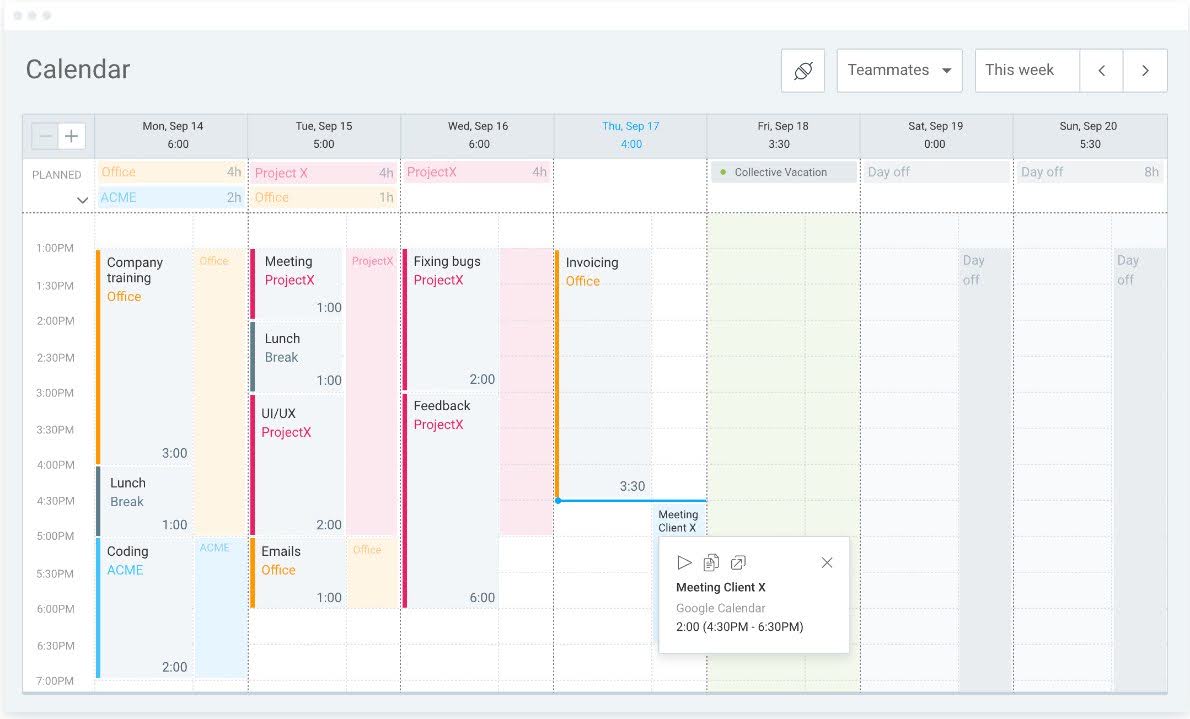
The calendar makes it easier to analyze your work routine and determine which activities take the most time.
Moreover, you can connect Clockify to your Google Calendar or Outlook and create time entries based on all events from those calendars. This makes it easier to see work and non-work obligations in one place and maintain a better work-life balance while working remotely.
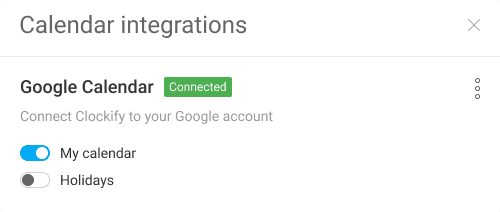
With Clockify, it’s easy to create a remote work routine that maximizes productivity without compromising your private time. The platform also simplifies working in different time zones for remote teams and increases trust with transparent, accurate time records.
Make remote work easier for you and your team.
